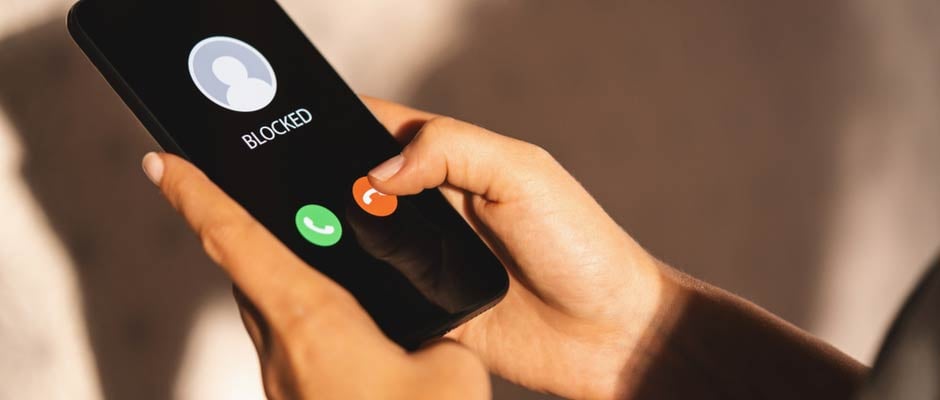Customer expectations change. Technology changes. Sales changes. Yet, cold calling remains. Should it, or is it finally time to put cold calling out to pasture with the typewriter and the Rolodex?
You dial the next cold call on your list. You summon all your energy as the phone rings, then dive into your pitch as soon as the prospect picks up. You’re being as charming as you’ve ever been… but it’s like talking to a brick wall. All your questions get one-word answers. The cold call recipient is being a little rude, then they throw you a curveball objection you didn’t see coming. In short: You’re bombing. The call ends with yet another rejection, and it’s on to the next one. But is it your fault? Does cold calling still work?
Let’s go over seven cold calling statistics, and answer the question once and for all: Does cold calling still work?
Does Cold Calling Still Work? The Case Against Cold Calling
Cold calling gets a bad rap. This is nothing new. For decades this sales method has been maligned by the media and dreaded by sales professionals. Enter modern phones, where every consumer and business has caller identification—do people even pick up the phone for calls they aren’t expecting these days? If not, how does cold calling still work?

The reason salespeople don’t like prospecting is that it requires a lot of activity to yield results. The number of dials you make results in fewer conversations than you would want, and only a small number of those conversations result in a meeting. But if you look at how a salesforce acquired meetings with the prospects that buy from them, you’ll find the vast majority coming from cold calls.
"Cold calling is a game. The way you win the game is by engaging a client in a short conversation that results in a meeting..."
Much of the time, providing the sales force with a better pitch for a meeting, something we call trading value, yields more conversations and books more meetings. Our proven system, called Talk Tracks, can help your team succeed in this area.
I made my first cold call when I was fifteen years old. Later, after joining my family business, I was told to call companies to see if they needed help. I didn’t know that I was cold calling. I was simply doing what I was asked to do. Because I believed I was supposed to be helping people, I never had any negative beliefs about calling strangers. That said, I have had people yell at me, hang up on me, and in one extreme case, I was ushered out of a building by a Secret Service agent in Century City.
The true cold call is walking into a building and asking to speak to the person who makes the decision on what you sell. Those who have made these types of sales calls were taught that when you drive across town to meet a prospective client, you are obligated to walk into each of the buildings next to the prospect’s business, as well as the building across the street.
Cold calling is a game. The way you win the game is by engaging a client in a short conversation that results in a meeting, whether that meeting is later in the week or while you are still on the phone with your prospective client because you are trying to do discovery. In either case, telling the client what they gain from spending time with you improves your results.

Effectiveness of Cold Calling
Let’s start with a vital question: Is cold calling effective? The somewhat unsatisfying answer is that it depends on who you ask. Some statistics can seem troubling at first blush, but with some context, you may begin to see a different picture.
Statistic 1: 80% of cold calls go to voicemail.
There are some activities that seem to yield little, but that isn’t the right way to look at your results. Look at the deals you’ve won, add up all the revenue you generated from cold calls and compare it to the deals that came from other sources. You can count the calls, the voicemails, and the meetings, should you choose to look at activity. But you are better off looking at where your revenue comes from. So what if you have to leave a voicemail?
Statistic 2: It also takes an average of 8 attempts to reach a prospect.
However, if you’re leaving a strong voicemail on that first attempt, you can lower this figure. If you are already prospecting each day, there is no reason to worry about how many attempts it takes to acquire the meeting. Eventually, if you are patient and professionally persistent, you’ll get a meeting. Would you make nine calls and leave nine emails if winning the client would generate $1,000,000 in revenue?
Statistic 3: 90% of high-level customers said they never respond to cold calls. However, there is other research that suggests that senior leaders buy from salespeople who cold call them.
It’s also important to note that, per the same source, only 13% of customers feel like sales professionals understand their needs. In other words, if you provide immediate value in a voicemail or introduction, you’re more likely to find success.
Statistic 4: Organizations that abandoned cold calling achieved 42% less growth than companies that devoted energy to this tactic. This case study that compares SurveyMonkey’s product-led growth strategy produces poor results when compared with Qualtrics.
In short, is cold calling dead? Yes. Cold calling works… if you have the right strategies.

Cold Calling Best Practices
Statistic 5: The average successful cold call lasts just shy of six minutes, but if you are only trying to schedule a meeting, it may be shorter. There is no reason to worry about how long you are on the phone, but you need to be careful. If you need a meeting and start discovery on the phone, you may find yourself being disqualified.
Statistic 6: What are the best times to make a cold call? Wednesdays and Thursdays before 9:00 AM or between 4:00 - 6:00 PM. If you can handle the truth, the best time to prospect was six months ago, The second best time to prospect is right now.
Statistic 7: The words you use matter! For example, saying “we provide” five times or more can reduce your close rate by 22%.
Every conversation should create value for your prospective client. The more you talk about your product or service, the more the client feels as if they are already being pitched. You want to have a conversation about the better results your prospective clients need. No one woke up and hoped a salesperson would pitch them, but a lot of business people wish they had the better results they need.
Increasing the Impact of Cold Calling Efforts
How can you leverage the lessons learned from these statistics to improve your cold-calling game? Simple: Using a sales script is the best way to increase the impact of your cold calls.
In cold calling, the only thing we have is a conversation. Good and effective language is better than poor and ineffective language. The old tactics, like asking the client if it is a good or bad time or if they have 27 seconds will cause the client to think less of you. You’ll find it easier to use language that the client finds valuable to them.
Answered: Does Cold Calling Still Work?
After going over the numbers, let’s answer this question once and for all. Does cold calling still work? The answer: It depends.
The good news here is that it depends on you.
If your team approaches cold calling statistics without the proper preparations, throwing things to the metaphorical wall to see what sticks, you’ll have a harder time finding success—and keeping your sales team’s morale up—than you will if you take a more measured approach.
The best way to prepare your team for cold calling success, and sales success in general, is to enroll them in my Sales Accelerator! The Accelerator offers courses that can help boost your sales team’s confidence and skills at the same time. Check out the Sales Accelerator today to see how it can help your team!
















Comments